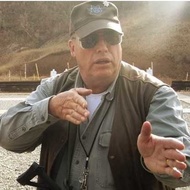26 May 23
“The past is never dead.
It’s not even ‘past!’”
Faulkner
After eighty years, not much has changed!
Germany’s innovative (in 1944) StG44 rifle is, once again, being used to fight Russians on the “Eastern Front!”
Some history:
425k StG44 rifles were manufactured in Nazi Germany during the last few months of WWII, too little and too late to affect the course of the War. Many (probably most) were never issued and never saw actual service, but
the appearance of this nontraditional weapon was historically significant.
The StG44, or “Sturmgewehr” (loosely translated: “storming rifle”) ushered-in the age of the modern “intermediate-cartridge” fighting rifle!
Germany’s Wehrmacht (War Department), due mostly to Hitler’s disinterest in autoloading military rifles, eventually got to work on an autoloading replacement for the K98k bolt-action Mauser Rifle, but not until the late 1930s.
Mauser and Walther were the only two companies to produce acceptable candidates, both chambered for the full-power 8mm (7.92×57) Mauser cartridge. The resulting rifle, the G43 (called “Hitler’s Garand,” largely a copy of the soviet SVT) actually worked well, but adequate numbers could not be produced fast enough, and it was quickly overshadowed by the stamped and easier-to-produce StG44 (in 8mm Kurz, or “short”).
The case-head on the 8mm Kurz was, of course, the same as the 8mm Mauser. At this point in WWII, Germans didn’t have time for an entirely new cartridge, so they simply shortened the 8mm Mauser and thus retained much commonality in loading machines. However, the large case-head meant that 30-round magazines built to accept it were long and clumsy.
The German 8×33 “intermediate cartridge” likely inspired the later Soviet 7.62×39, and the American 5.56×45!
Hitler (increasingly detached from reality) belatedly pushed for the G43, simultaneously rejecting the Mkb-42 (“machine carbine”), as he saw no need for an entirely new caliber. But, continued development went-on behind Hitler’s back, and the Mkb-42 eventually became the StG44.
Both Walther and Haenel (headed by Hugo Schmeisser) produced their own versions of the Mkb-42, the Mkb-42W, and the Mkb42H. Both were chambered for the intermediate cartridge (8mm Kurz). Haenel’s version won-out, as it lent itself to mass production far better than did Walther’s. Haenel’s version was initially open-bolt, but was later changed to a closed-bolt gun
In fact, there is scant difference between the “Mkb-42,” “MP43,” “MP44,” and the “StG44,” except the designation, “MP” (for machine pistol), which was used at first to fool Hitler (successfully) into thinking this new assault rifle was just an upgrade of existing pistol-caliber submachine guns. Thus, the term “gewehr” (“rifle”) was avoided, as that would suggest a completely new battle rifle, an idea Hitler had already rejected.
Seeing what Americans had done with the Garand Rifle, a delusional Hitler wanted G43s, equipped with telescopic sights, issued to every soldier (for long-range fighting). But, his commanders on the Eastern Front knew that the G43, even if it could be produced in sufficient numbers (which it couldn’t), would not provide the battle-winning technology they needed. So, in secret, they pushed development and deployment of the world’s first “assault rifle,” the StG44!
The idea was presented a second time, and a second time soundly rejected by an increasingly-annoyed Hitler, who declined to even attend an elaborate demonstration (put-together just for him). Hitler particularly did not like the idea that this intermediate-cartridge “rifle” could not launch rifle-grenades and was thus not suitable as an anti-tank weapon.
For the same reason, the StG44 was confined mostly to the Eastern Front. The western press had scant interest in anything going-on in Russia! Had this new rifle been issued on the Western Front, the western press would instantly pick-up on the new development, and Hitler would quickly find out what had been going on behind his back.
Eventually, he did anyway, but by that time this new “assault rifle” had proven itself so effective, and was so popular with troops, that all was mostly forgiven!
Heinrich Himmler, head of the SS and close Hitler confidant, was a strong advocate for this new intermediate-cartridge rifle and likely persuaded Hitler to soften his objection.
The G43 was popular with troops too, surely preferred over the Mauser bolt-gun (K98), but nowhere near as popular as the StG44, which was an instant sensation among troops who got their hands on it and had the opportunity to use it during actual fighting.
Right up until the end of the War, 8mm Kurz ammunition was always in critically short supply, as were StG44 magazines, two reasons why this new rifle, innovative as it was, never substantially altered the course of the War.
Telescopic sights and mounts for the StG44 proved unsatisfactory and were never issued.
StG44s (captured by Russians at the end of the War) went on to see service with Soviet forces and others, particularly in East Germany, Africa, and the Middle East, for the remainder of the 1900s. Some saw service in Vietnam, and some are still turning-up today in the Ukraine War, as noted above!
We even see a captured StG44 slung over the shoulder of Don Collier (played by Brad Pitt) in the 2014 Columbia Pictures WWII film, “Fury!”
By contrast the Soviet SVT and the German G43 never acquired any kind of following after the War.
For the Eastern Front, the Soviets relied on cheap and easy to manufacture SMGs, (PPSh-41), firing pistol
ammunition.
After the War, the SVT was quickly superceded by the SKS, and shortly afterward by the Kalashnikov.
“Who don’t move, don’t notice their chains.”
Rosa Luxemburg
/John


